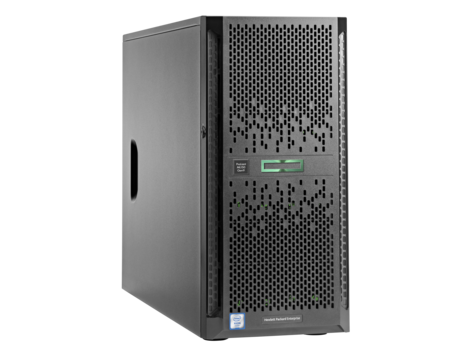
Hpe Support Pack For Proliant Drivers And Firmware
Based on the configured security state, iLO supports the following: Production.months of support on each Service Pack for ProLiant. ProLiant Support Packs (PSP) represent operating system (OS) specific bundles of ProLiant optimized drivers, utilities, and management agents for HP ProLiant hardware and available for SUSE Linux Enterprise Server 10.HPE iLO Advanced License iLO 2, iLO 3, iLO 4, iLO 5 ALL HP SERVER FAST. SPP can be used in an online mode on a Windows or Linux hosted operating system, or in an offline mode where the server is booted to an operating system included on the ISO file so that the. This solution uses HP SUM as the deployment tool and is tested on all supported ProLiant servers including ProLiant Gen8 and later servers. The SPP is a comprehensive systems software (drivers and firmware) solution delivered as a single package with major server releases. Service Pack for ProLiant.

I prefer the stock SUSE drivers and only install HP ones if I experience compatibility problems or require a certain feature not provided by the stock driver. Don’t try to fix the non existing problem, install only the packages you really need. SPP can be used in an online mode on a Windows or. This solution uses HP SUM as the deployment tool and is tested on all supported ProLiant servers including ProLiant Gen8 and later servers.
Don’t you worry, you will not miss anything out of the installation. It’s smart enough to mark all dependent packages too automatically. /install811.sh -helpI recommend unselecting everything (GUI) then re-selecting just what you need. /install811.shOtherwise you could do unattended or scripted install (only for experienced users): sles10:~/compaq/csp/linux #. Without parameters it would fire up the GUI but WARNING: if you do this through shell and X11 forwarding is not enabled, the installer script will not be able to open the GUI and as a result will carry out full CLI installation of all packages available for your hardware! sles10:~ # tar zxf psp-8.11.sles10.i686.en.tar.gzSles10:~/compaq/csp/linux #. Update Manager utility enables you to deploy PSP.If you have local RAID arrays configured via HP SmartArray then additionally:HP Array Diagnostics Online Edition ConfigurationGet the right package for your architecture (32/64bit) from the link above then extract the tarball followed by executing the installer shell script as shown.
The installer sets the necessary services up for boot, puts necessary LSB scripts into the right place but one of them has a typo!I tried my best to get this fixed by HP people, seem they either ignore this completely or think I’m wrong hence we need to fix this ourself.SUSE LSB scripts use headers to describe what they provide, what they depend on, etc. Luckily the HP agents need no configuration anymore, they work out of the box with the SUSE snmp service, some minor fixes are essential though. SNMP agentsIt depends on the stock snmp service which comes with the standard SLES 10 installation anyway hence I will not cover this in this guide.
Double reboot should make your console errors disappear for sure. What happens is that components realize the new kernel and give errors on console after first reboot but in the meantime they actually rebuild themselves. Kernel updatesThese are fairly safe nowadays even if some components compiled to the running kernel only. It may be handy to gather information about a failed component (if any) if you are not familiar with the CLI utilities. To get these emails in time I usually forward the root email messages to myself or to a group of people: sles10:~ # vi /etc/aliasesRoot: # newaliases System Management Home PageIt installed a web frontend as well what you can reach on a certain port of your host for example:You can initially log in with the root account of your local server only then query your hardware, look at system health, etc. The solution is now obvious, correct LSB script: sles10:~ # grep Required-Start /etc/init.d/hp-snmp-agentsWith the wrong script, snmpd service actually starts after the agents which causes improper operation and error messages sent to the root user.After the fix you have to reconfigure the service to correct the startup orders: sles10:~ # insserv hp-snmp-agentsThese agents will monitor your hardware and warn you by email as soon as the failure occurs.
To enable1 Install hp-OpenIPMI or insure the stock IPMI driver is available.4 Configure SNMP by running “hpsnmpconfig”5 Install hpsmh and Configure hpsmhd(see the hpsmh documentation for configuration options)From the system you prepared like this save the following files needed for the automatic installation “/etc/hp-snmp-agents.conf” and “/usr/local/hp/hpsmh.cfg”3 copy Template “/etc/hp-snmp-agents.conf” and “/usr/local/hp/hpsmh.cfg” to the server and export variable “HPSMHSILENT=true”.No warranty that the steps are 100% correct, but my first tests where positiv. To avoid issues on XEN host we need to make the snmpd service dependent of xend service in similar fashion as before: sles10:~ # grep Required-Start /etc/init.d/snmpdImportant documentation about manual /automatic install of HP Agents “man hp_mgmt_install”INSTALLATION WITH SYSTEM MANAGEMENT HOMEPAGE (SMH) SUPPORTThis option enables SNMP support plus the ability to view gathered date via a web browser user interface. It generates similar errors as discussed earlier due to xend modifies the networking and creates software bridges on the physical interfaces.


 0 kommentar(er)
0 kommentar(er)
